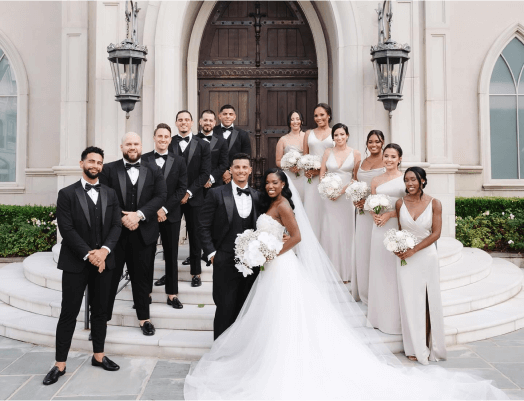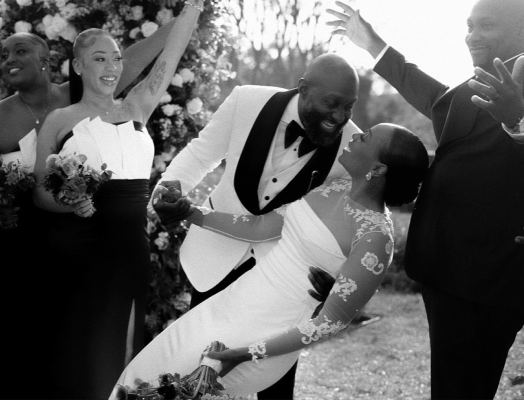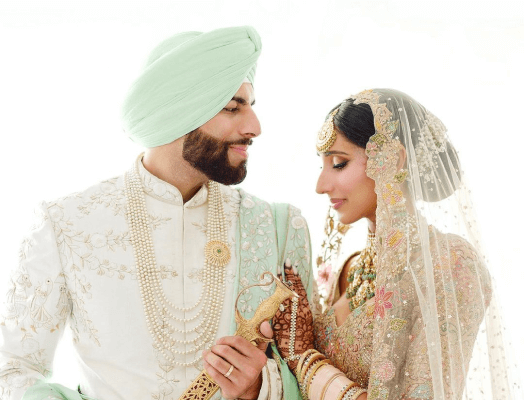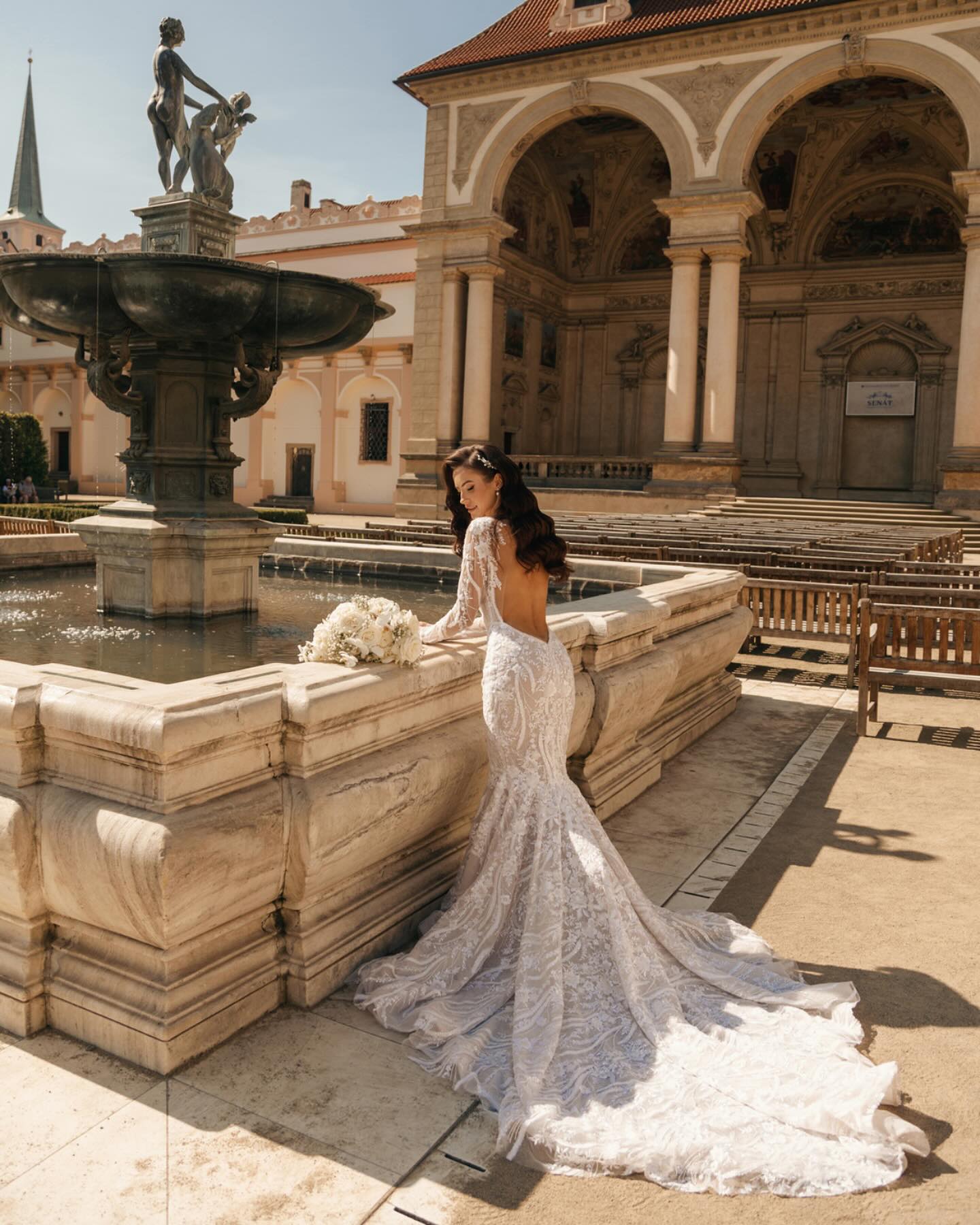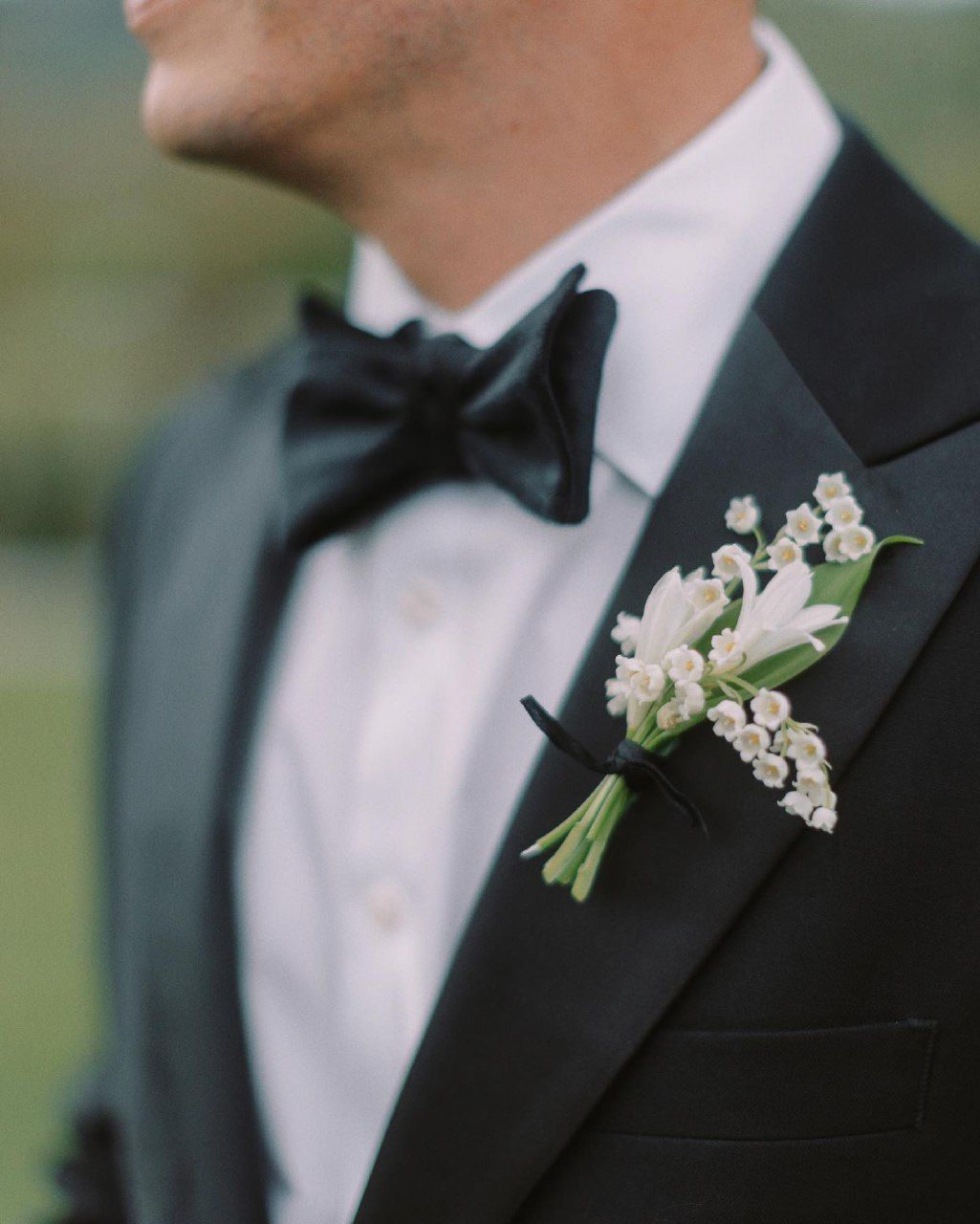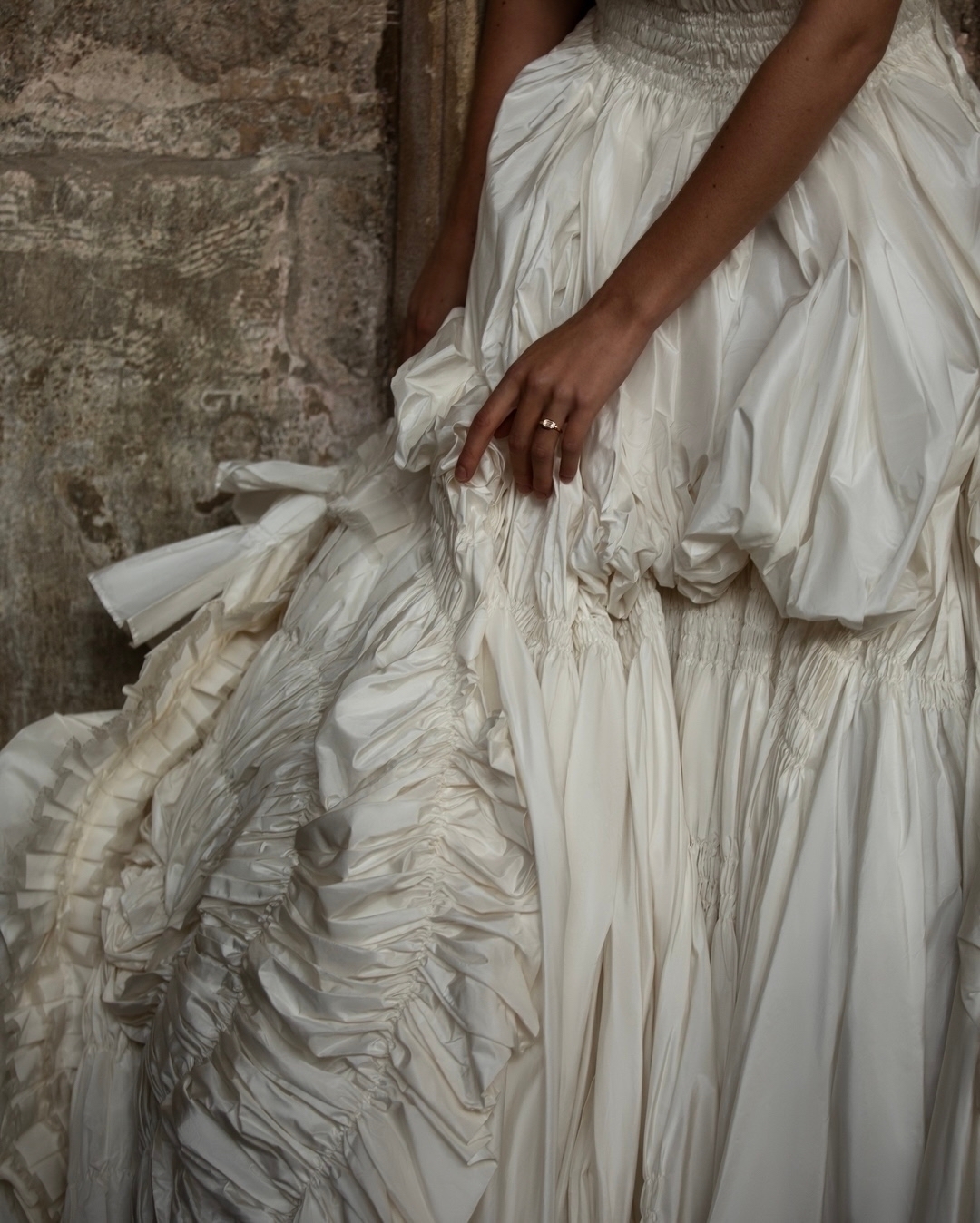The Timeless Beauty of Japanese Wedding Traditions
- Author: Natali Grace Levine
- Reading time: 7 min 0 sec
- Publication date: 06/19/2024
- Updated: 01/15/2025
Today, we're diving into the heart of Japan to explore the rich tapestry of traditions that make a Japanese wedding. Japanese marriage customs are a fascinating blend of ancient rites and modern practices, making every ceremony uniquely beautiful and steeped in cultural heritage. Whether you're planning a wedding, attending one, or just love learning about different cultures, understanding these customs can enrich your appreciation of Japanese matrimonial celebrations.
Find Your Perfect Wedding Vendors
Ancient Japanese Wedding Traditions
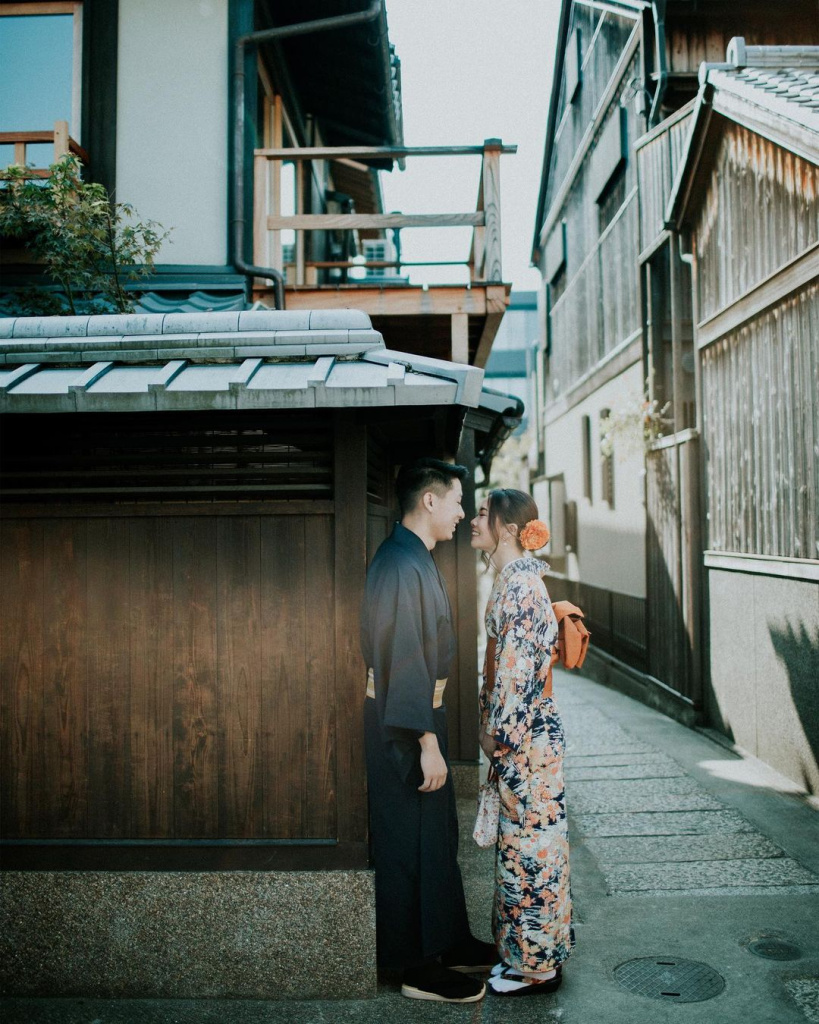
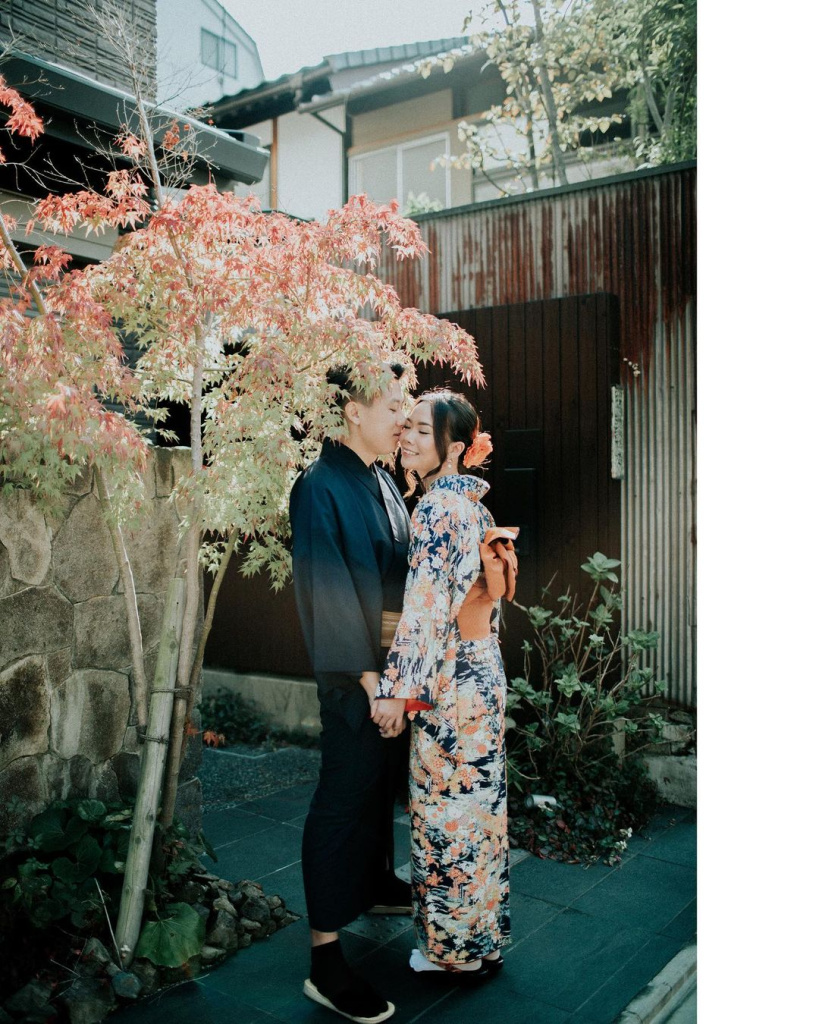
Traditional Japanese weddings are steeped in a rich history of ceremonial grandeur and symbolic practices that date back centuries. These ancient customs are not only about celebrating a union but are deeply ingrained in societal values and spiritual beliefs. The preservation of these traditions provides a direct link to Japan's cultural heritage, offering a window into the societal norms and values of times gone by. Let's delve deeper into some of these enduring practices that continue to influence even the most modern Japanese weddings today.
The Betrothal
The Betrothal, or "Miai," is a formal meeting between the families of the prospective bride and groom, traditionally arranged by a matchmaker. This pre-engagement tradition involves a careful examination of each family's social status and the compatibility of the couple. It sets the stage for future wedding plans once both parties agree to a match. Here, gifts are exchanged, and the couple's intentions are formally declared, symbolizing not just an agreement between the bride and groom but between their families.
Auspicious Wedding Dates
Selecting an auspicious date for the wedding, known as "Koyomi no uranai," is a tradition that uses the ancient Japanese calendar to determine the most favorable day for the ceremony. This practice is rooted in astrology and cultural beliefs that certain days bring greater joy and prosperity than others. Families consult a calendar or an astrologer to choose a date that promises the best future for the couple:
- Rokuyo System: The calendar system that labels days as great, good, or bad for various activities.
- Astrological Influence: Consideration of celestial alignments that might affect the couple’s life together.
- Seasonal Considerations: Preference for certain seasons like spring or autumn, which are considered times of renewal and beauty.
- Harmony with Nature: Aligning the wedding with natural cycles to ensure a harmonious marriage.
Traditional Attire
In a Japanese traditional wedding, attire plays a crucial role in the aesthetics and symbolism of the ceremony. The bride typically wears a Shiromuku, a pure white kimono that signifies purity and the willingness to be dyed in the colors of her new family's customs and traditions. The groom wears a Hakama, which is a divided skirt or long trousers, often in black or another dark color, paired with a Haori, a jacket that bears the family crest to signify family pride and continuity. This attire not only beautifies the ceremony but also connects the couple to their ancestors.
Kanzashi
Kanzashi are elaborate hair ornaments worn by the bride, which vary significantly depending on the season and the specific attire. These accessories are traditionally made from small pieces of folded fabric (silk) and can include intricate flower designs or long, dangling pieces that move gracefully with the bride. They are not merely decorative; each piece is imbued with symbolism and is chosen carefully to reflect virtues such as beauty, grace, and a harmonious marriage.
Formal Receptions
Unlike Western weddings where dancing is often a central activity, many Japanese wedding receptions focus more on social interaction, speeches, and carefully planned performances. These events are typically structured with a program that includes speeches from family members and friends, followed by performances that might include singing or traditional arts.
Modern Wedding Traditions in Japan
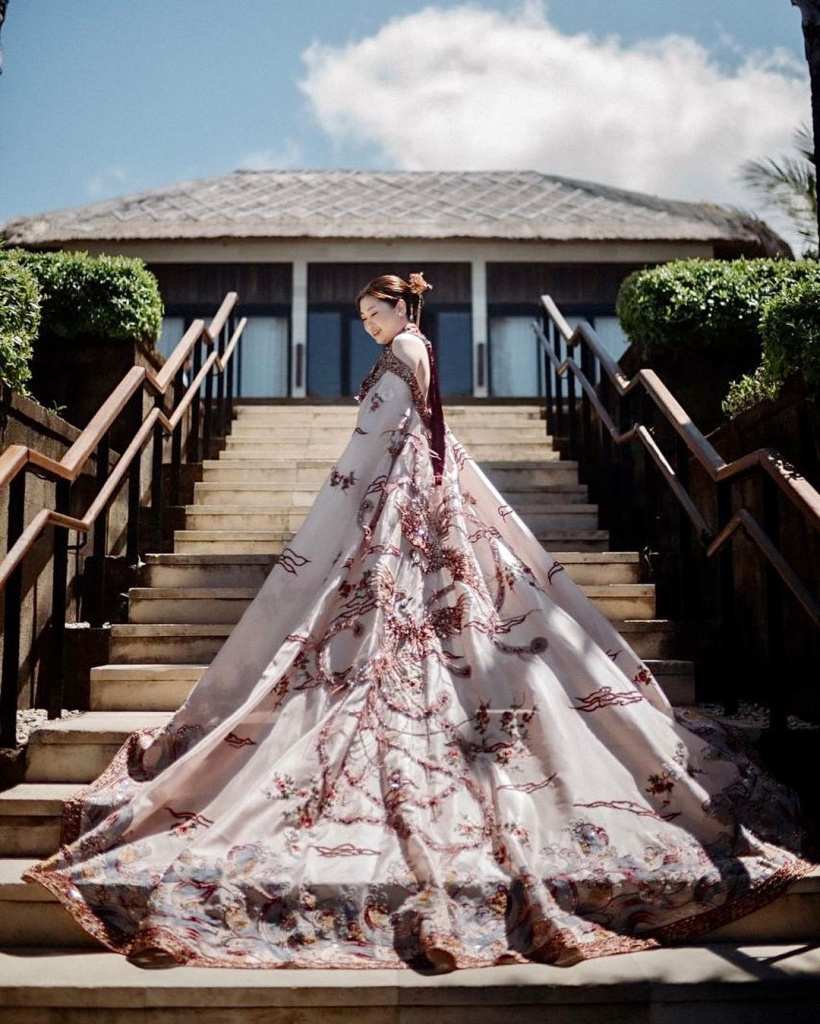
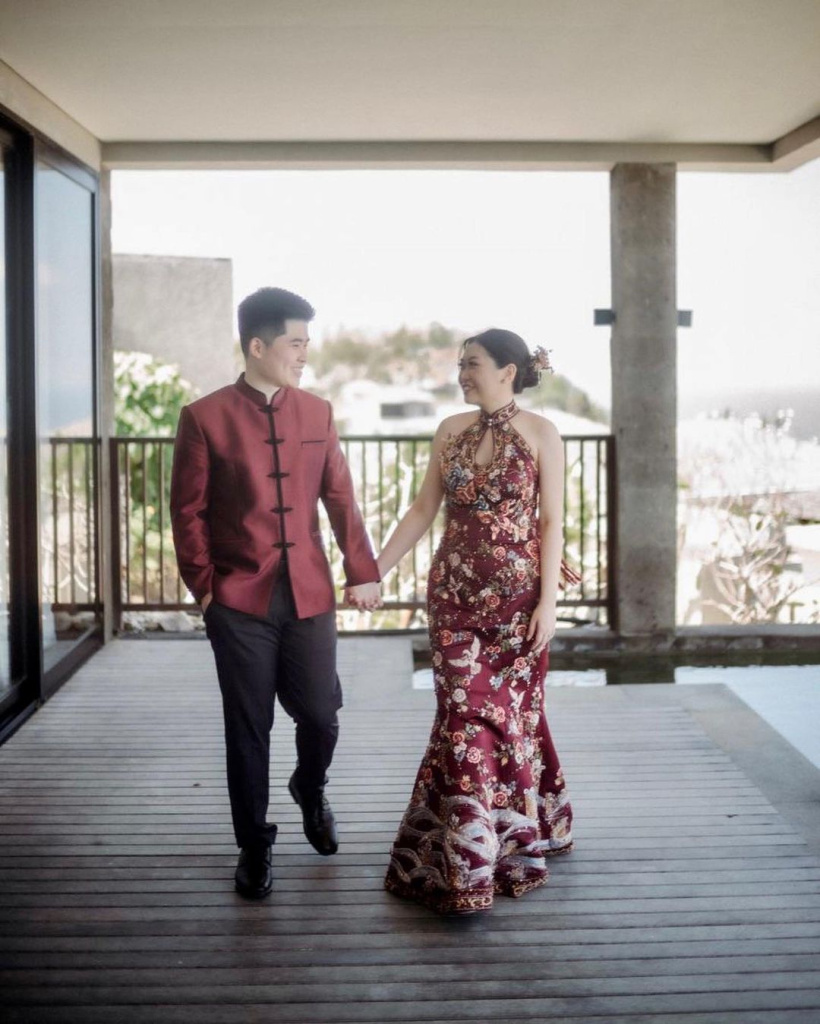
In contemporary Japan, weddings are a beautiful amalgamation of age-old customs intertwined with modern, often Western influences. This blend not only reflects the global connectivity of today's society but also the individual preferences of couples who wish to celebrate their union in unique and personalized ways. Here, we'll explore how Japanese marriage traditions have adapted and evolved, creating a vibrant tapestry of customs that honor both the past and the present.
Daytime Weddings
Daytime weddings in Japan have gained popularity due to their natural ambiance and lighting, which are perfect for photography. Such settings often allow for more relaxed schedules, enabling guests to enjoy the day without the rush typical of evening events. Ceremonies held during daylight hours tend to emphasize the beauty of the natural surroundings, especially if the venue has picturesque gardens or views. Additionally, daytime events can be more cost-effective, appealing to couples looking for elegance without extravagance.
In-House Vendors
The trend of using in-house vendors at wedding venues has streamlined the planning process dramatically for couples. These vendors typically include caterers, decorators, photographers, and even entertainers who are familiar with the venue, ensuring a seamless execution of the event.
Western Influence
The incorporation of Western customs into Japanese weddings has become increasingly popular over the last few decades. This trend is most visibly seen in the choice of attire, with many brides opting for Western-style wedding dresses in addition to or instead of traditional kimonos. Additionally, Western-style wedding practices such as exchanging rings and personal vows during the ceremony have been embraced. These elements are often combined with traditional aspects to create a hybrid ceremony that honors both cultures.
Lavish Receptions
Japanese wedding receptions are known for their meticulous organization and breathtaking elegance. These events often feature multi-course meals known as "kaiseki," which include delicacies that cater to a range of tastes and represent culinary artistry. Lavish receptions also prioritize guest experience, offering entertainment that ranges from live music performances to magic shows. The meticulous attention to detail ensures that each aspect of the reception contributes to a sophisticated and memorable event.
Reception Games
Games during the reception are an inventive way to engage guests and add a layer of fun and interaction to the celebrations. These games can range from quizzes about the couple to interactive challenges that encourage guest participation. They are designed not only to entertain but also to foster a sense of community and celebration among the attendees. Here are some typical games you might encounter at a Japanese wedding reception:
- Bingo Games: Customized bingo cards featuring details from the couple’s relationship can create a fun and interactive way for guests to learn more about the couple.
- Couple Trivia: Guests are quizzed on their knowledge of the couple’s history, preferences, and funny anecdotes.
- Photo Challenges: Guests might be encouraged to take photos with different groups of people or in various poses, which are then displayed in real-time on a screen.
- Paper Airplane Wishes: Guests write wishes or advice on paper airplanes and launch them toward the couple, combining fun with heartfelt sentiments.
Wedding Portraits
Taking wedding portraits is another traditional aspect of Japanese weddings, where couples often rent additional outfits specifically for the photo session. These portraits are not just keepsakes but are seen as important family heirlooms that capture the essence of the couple’s special day. The tradition of capturing these moments in full wedding attire before or after the ceremony highlights the importance of aesthetics and memory in Japanese culture.
Japanese Wedding Ceremony Customs
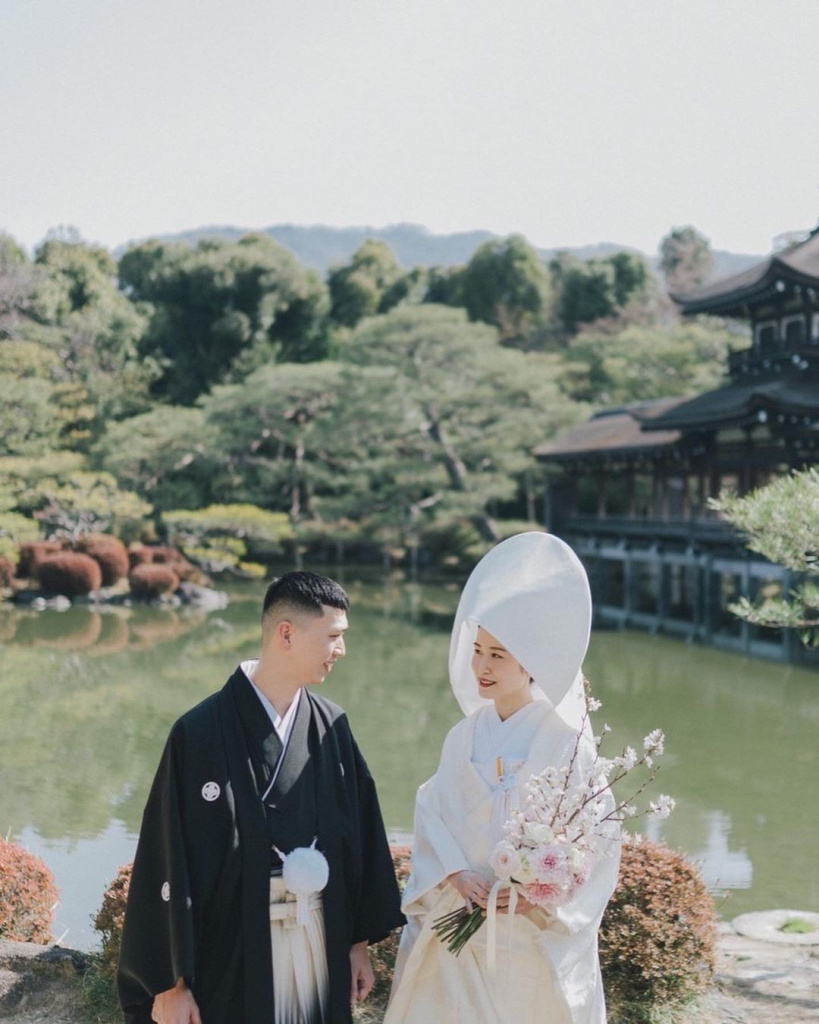
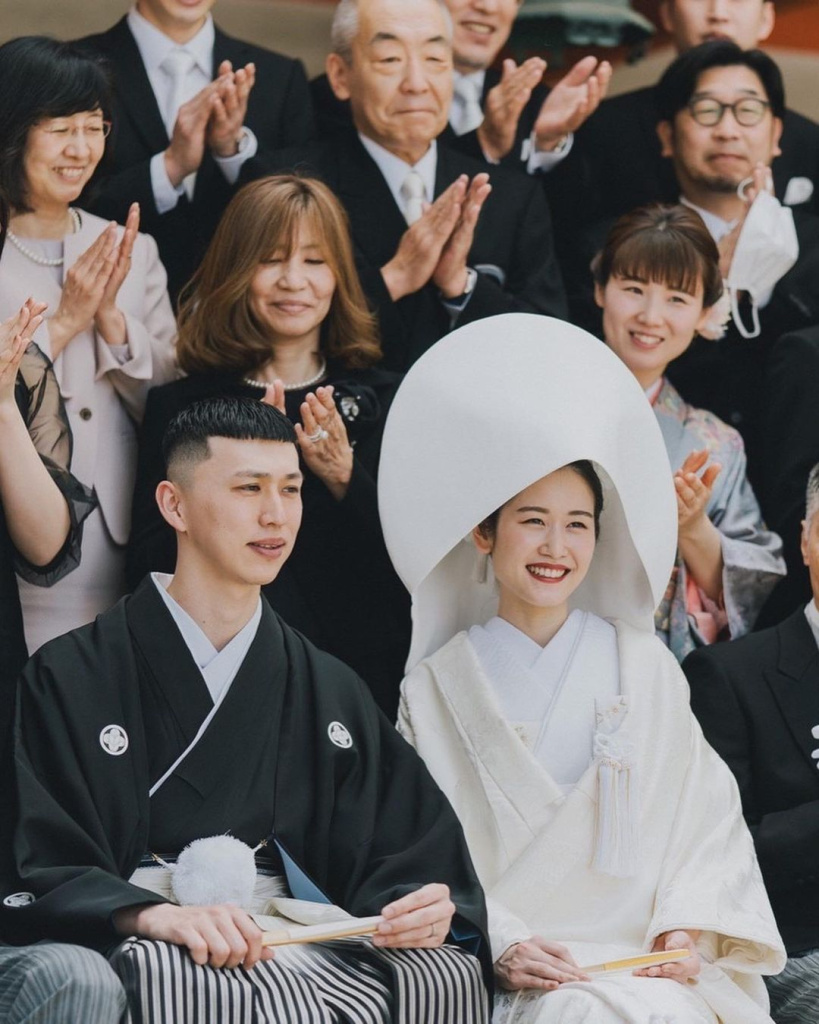
Japanese wedding ceremonies are a rich blend of tradition, spirituality, and meticulous attention to detail, each element imbued with deep cultural significance. These ceremonies are not just about the union of two individuals but also about honoring family, tradition, and the spiritual elements that are believed to ensure a harmonious marriage.
Shinto Wedding Ceremony
Central to many traditional Japanese weddings is the Shinto ceremony, conducted at a Shinto shrine with a priest officiating. This ceremony is deeply spiritual, focusing on the purification of the couple and their protection from evil spirits. The couple offers branches of the sacred Sakaki tree to the kami (gods), asking for their blessings. The ritual is performed in the presence of family and close friends, emphasizing unity and the cultural significance of marriage.
Sake-Sharing Ceremony
Known as "San-san-kudo," the sake-sharing ceremony is a pivotal part of the Shinto wedding. The ritual involves three stacked cups of sake, from which the bride and groom each drink three sips, making nine sips in total. This act symbolizes the sealing of their bond and the merging of their souls and families. The numbers three and nine are considered lucky in Japanese culture, and the repetitive sipping ensures the union is fortified with these auspicious blessings.
Bridal Parade
In some regions of Japan, the traditional Japanese bride may be part of a bridal parade to the wedding venue. This tradition is a visually striking element of the day, where the bride, often in a palanquin, is paraded through the community. This not only showcases her beauty and elegant attire but also symbolizes her departure from her family and her introduction into her new family. This parade vividly highlights the transformation and significant life change for the traditional Japanese bride, making it a memorable and culturally rich aspect of the ceremony.
Bouquet and Letter to Honor the Parents
A touching moment in many Japanese weddings is when the bride presents a bouquet and a handwritten letter to her parents. This gesture is a show of gratitude for her upbringing and symbolizes her farewell to her family home.
Japanese Wedding Gift Traditions
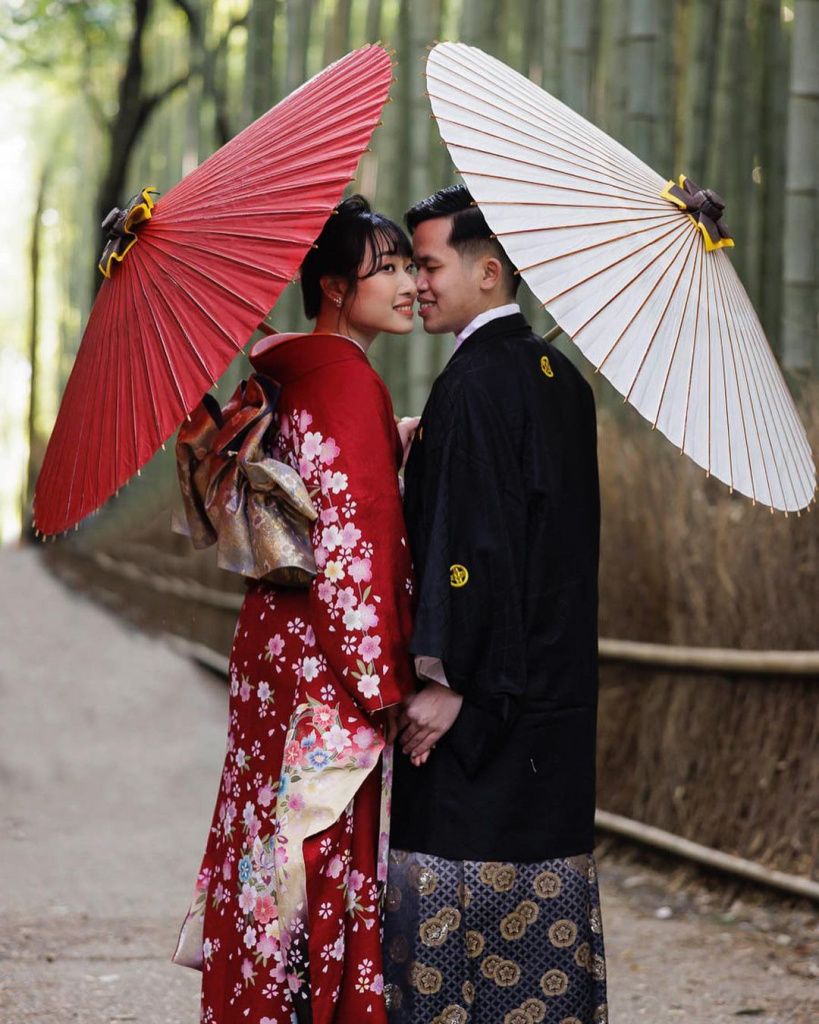
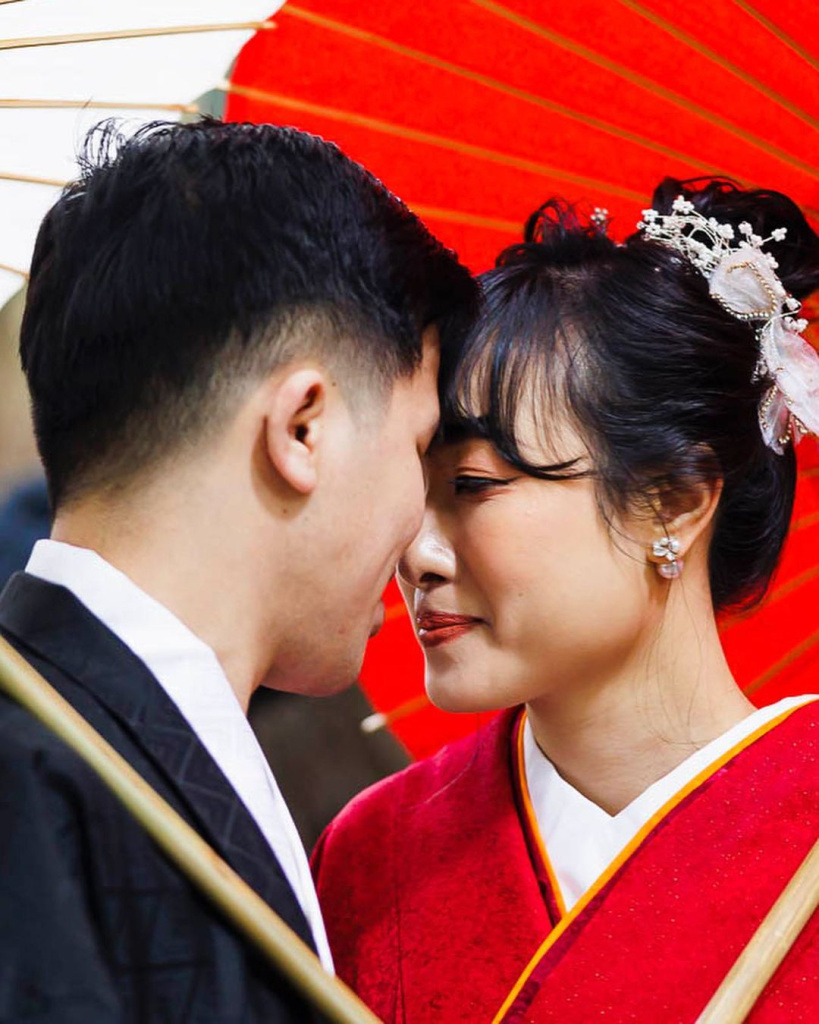
Gift-giving is a central and highly ceremonial aspect of Japanese weddings, reflecting the culture's deep-rooted values of respect, honor, and social ties. In Japan, the exchange of gifts is not just a simple transaction but a significant gesture laden with symbolism and thoughtfulness. These traditions underscore the importance of reciprocity and community in Japanese culture, making every gift a meaningful contribution to the celebration.
Monetary Gifts - Goshugi
Goshugi is the monetary gift presented by guests to the couple, traditionally placed in a special envelope called a shugi-bukuro. The amount of money given often depends on the guest's relationship to the couple and is expected to be an odd number, which symbolizes money that cannot be split, thereby wishing the couple unity and a strong bond. These gifts are considered a vital part of the wedding and help the couple start their new life together.
Gifts for Guests - Hikidemono
In return, the couple gives Hikidemono, a gift to the guests, which is a traditional way to express gratitude for their attendance and for the monetary gifts received. These return gifts are usually thoughtful items that the guests can use at home, such as fine china, gourmet treats, or local specialties. The choice of Hikidemono often reflects the couple's personality or shared interests.







